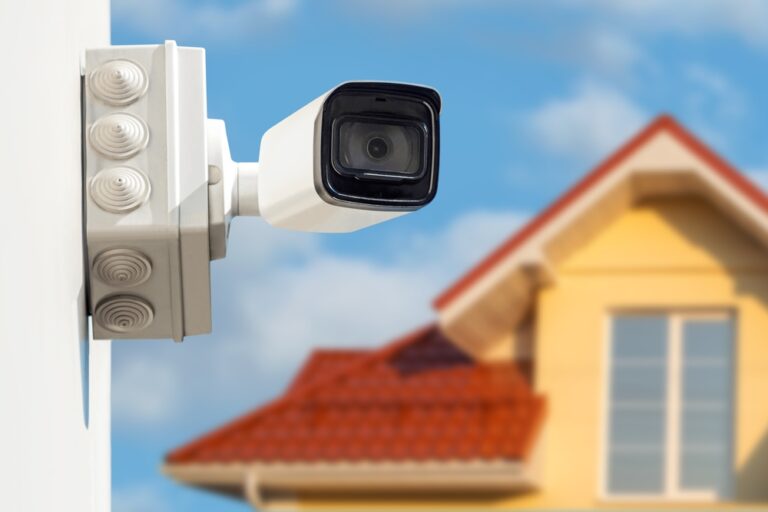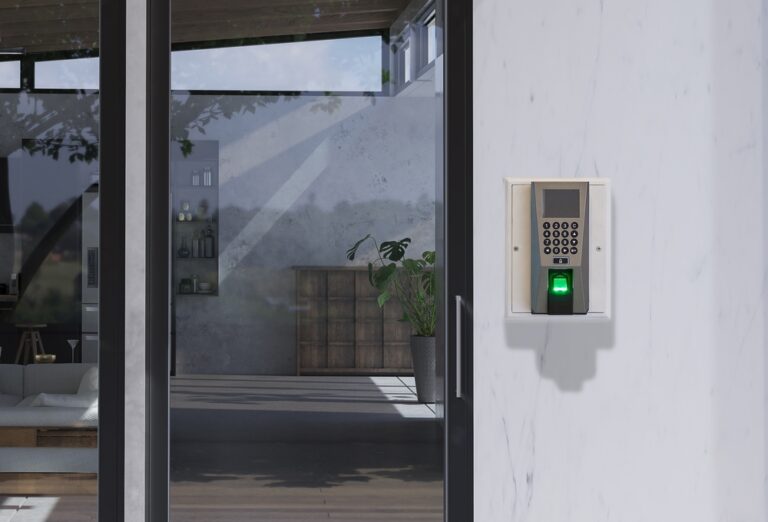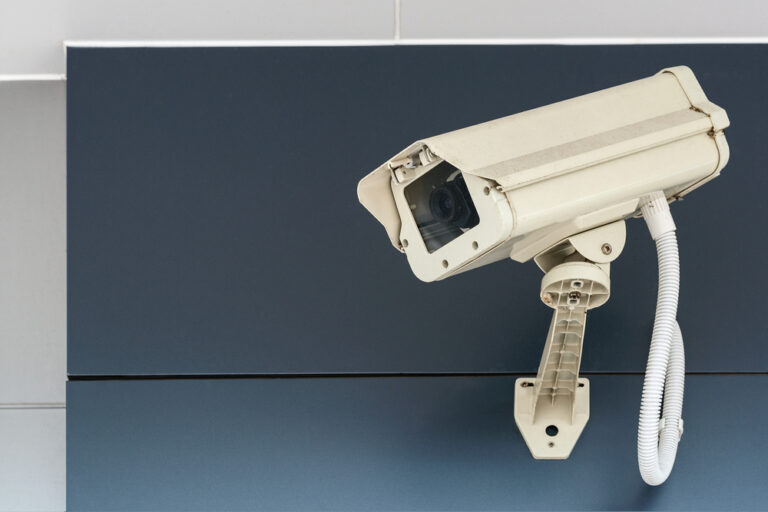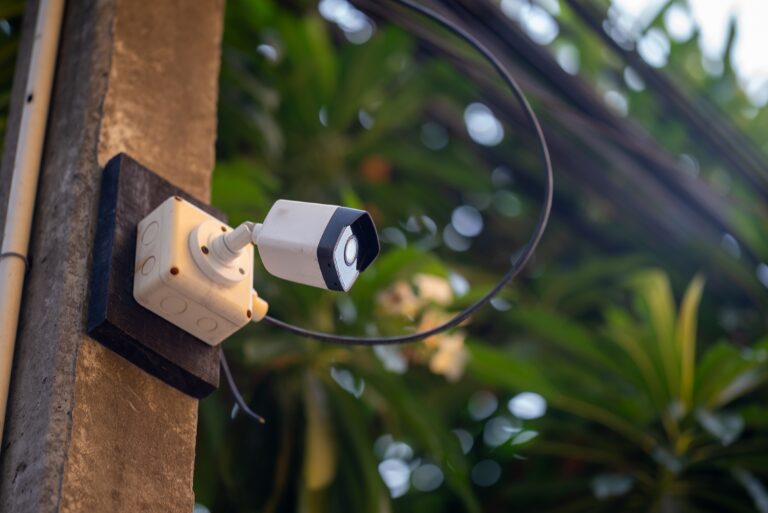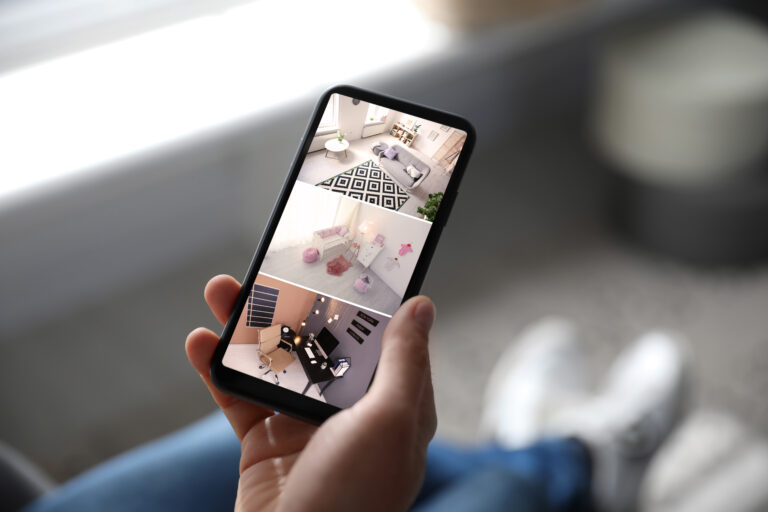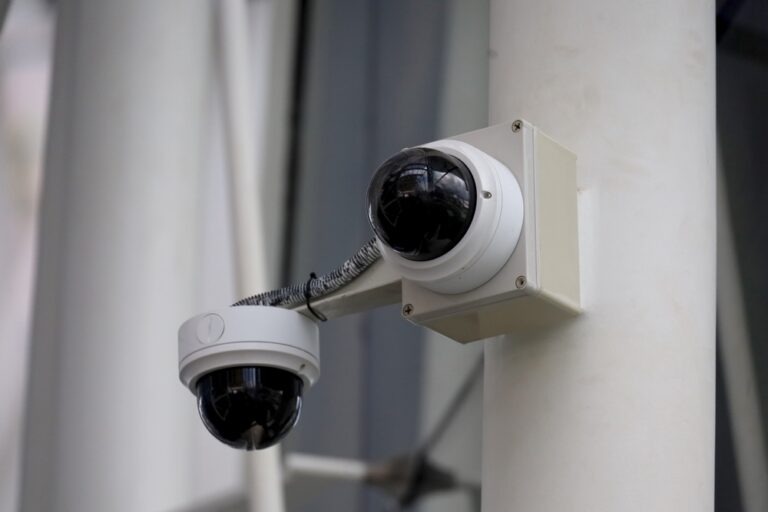- 1) Key Takeaways
- 2) The Importance of Data Privacy in Home Security Systems
- 3) What You Need to Know About Home Security Systems and Data Privacy
- 4) How to Ensure Data Privacy in Home Security Systems
- 5) The Role of Encryption in Data Privacy
- 6) Best Practices for Secure Installation and Enhancing Home Security
- 7) Benefits of Security Camera Installation in Maintaining Home Security and Data Privacy
- 8) Remote Monitoring and Privacy Concerns
- 9) Maintaining Data Privacy
- 10) The Importance of User Education
- 11) Legal Protections for Data Privacy
- 12) Conclusion
-
13)
FAQs
- 13.1) What steps can I take to securely monitor my home security system remotely?
- 13.2) How can I prevent hackers from accessing the data from my home security cameras?
- 13.3) What are some examples of personal information that could be at risk from a home security breach?
- 13.4) Should I be concerned about legal regulations related to home security systems?
- 13.5) How can I involve my family in protecting our home security data?
As smart home technology is becoming as common as a morning cup of coffee, the security of your digital fortress is paramount. As an expert with years of experience in digital security, I’ve seen firsthand the evolving threats to data privacy that linger behind every cutting-edge home security system.
The buzzwords like ‘encryption’ and ‘cloud storage’ often create a false sense of safety among homeowners, yet risks are lurking when these technologies aren’t properly managed.
The importance of safeguarding our personal spaces both physically and virtually cannot be overstated; hence, ensuring data privacy in your home security systems isn’t just about keeping intruders out—it’s also about maintaining control over who has access to your private life stored within those devices.
With the Electronic Frontier Foundation advocating for robust privacy measures, understanding how to protect your information becomes not only wise but necessary. Keep reading for key insights on securing your sanctuary in the digital age—your peace of mind may depend on it.
Let’s take a closer look.
Key Takeaways
- Home security systems can be vulnerable to hackers, making it essential to choose providers that offer encrypted devices and regular software updates.
- Strong passwords and two-factor authentication play crucial roles in preventing unauthorized access to your security system data.
- Regularly updating the software for DVRs, NVRs, and any associated apps is key to closing off potential vulnerabilities exploited by cybercriminals.
- Data encryption is a powerful tool that helps keep sensitive information from your home security systems inaccessible to intruders.
The Importance of Data Privacy in Home Security Systems
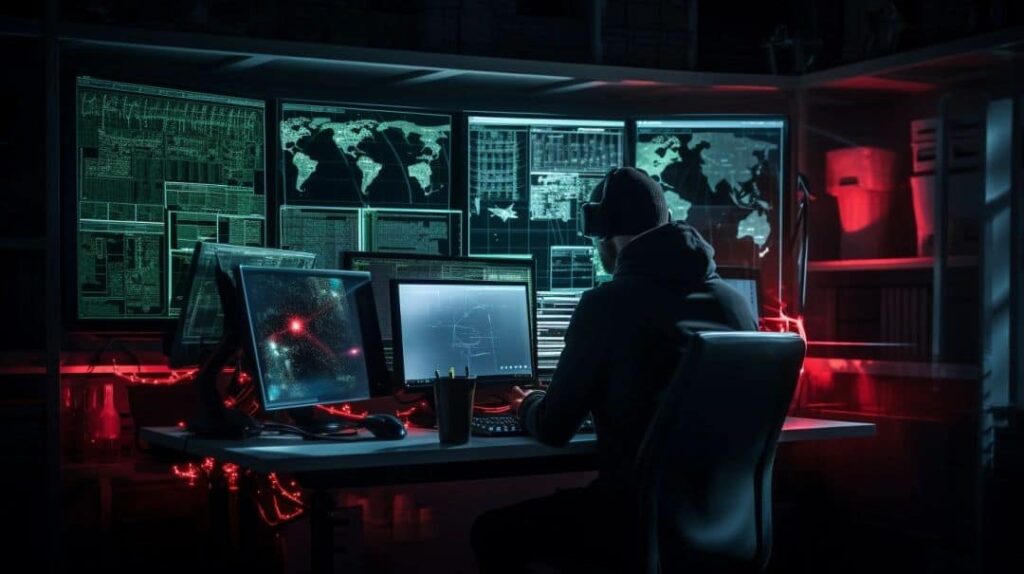
Ensuring data privacy in your home security system is critical; without it, sensitive personal information could fall into the wrong hands, leading to identity theft, financial loss, and a profound violation of your family’s sense of safety.
The stakes are high when digital intruders have potential access to video feeds from security cameras or stored data on DVRs and NVRs within your wi-fi network. As you integrate smart devices for convenience and monitoring purposes, the need to safeguard the transmission of data becomes paramount—not just for peace of mind but also for protecting what matters most in your life.
Risks of data breaches in home security systems
Hackers target home security systems to gain unauthorized access to video feeds, personal data, and potentially control over your smart home devices. These breaches can lead to the exposure of sensitive information like your daily routines, personal moments, or even financial information if captured by cameras during online transactions.
Your wireless security cameras not only require protection from physical tampering but also strong digital safeguards against such intrusions.
Homeowners face a real threat as cybercriminals exploit vulnerabilities in routers, software, and insufficiently secure Wi-Fi networks to penetrate these defenses. Data privacy becomes compromised when attackers intercept data transfer between your security camera installation and remote viewing apps on mobile devices or laptops.
Regular updates and robust password protocols are critical barriers you must maintain to prevent unauthorized access to your digital video recorder (DVR) or network video recorder (NVR) systems.
Personal information at risk
As we delve into the vulnerability of personal information, it’s clear that the stakes are high. Your home security system not only guards against physical threats but also holds keys to your private life.
The moment you install a smart camera or a Google Nest doorbell, you’re placing trust in these devices to safeguard more than just your property; they become stewards of data ranging from daily routines to intimate moments.
Such sensitive details, if fallen into the wrong hands due to weak passwords or unsecured WiFi networks, could lead to identity theft and privacy violations.
Your phone number, stored videos on a DVR or NVR system—even when WiFi cameras seem secure—can be compromised by savvy cyber intruders. Opting for professional installation can mitigate some risks, but it’s essential to actively manage security settings and network access yourself.
Updates should be frequent; strong login credentials are non-negotiable as is considering wired options over wireless ones where practical. Every piece of equipment from ethernet cables connecting your cameras to the internet infrastructure within your building plays a role in maintaining an impervious defense against unauthorized access to personal information.
Potential consequences
Ignoring data privacy in your home security system can lead to dire outcomes. If a breach occurs, it’s not just the invasion of your physical space you need to worry about. Hackers may gain access to your personal data, including financial information and private moments captured by security cameras.
This could result in identity theft, financial loss, or even extortion. Moreover, if sensitive footage leaks online from DVRs or NVRs due to inadequate protection, the implications on personal safety and reputation can be devastating.
Take action now by choosing robust security measures for peace of mind against these potential threats. Smart home integration must prioritize data protection as strongly as it does convenience.
Secure login credentials and regular software updates are fundamental steps toward safeguarding your system against unauthorized access. Next up: Understanding what goes into making a home security system privy to your privacy needs is key—let’s delve into that further.
What You Need to Know About Home Security Systems and Data Privacy

Your home’s security system keeps an eye on your property, but it’s vital to know who else might be watching. As these devices become smarter and more connected, they’re gathering heaps of information – from video feeds to when you come and go.
With this intelligence potentially stored in the cloud or on a network video recorder (NVR), it becomes a treasure trove for hackers if not properly protected.
To keep your data out of the wrong hands, start by selecting a security system that prioritizes privacy. Check reviews and reports like those from Consumer Reports or look for seals of approval from organizations like the Electronic Frontier Foundation (EFF).
Make sure encryption is part of the deal – it scrambles your data so only authorized eyes can interpret it. It’s also crucial to secure wireless connections against interference and regularly change passwords to thwart would-be intruders.
Stay vigilant about software updates; they often include essential fixes that close off vulnerabilities in DVRs, NVRs or even simple apps associated with your security setup.
How to Ensure Data Privacy in Home Security Systems

Secure your peace of mind with vigilant data privacy measures for your home security system; establish robust protection by selecting a respected provider, staying up-to-date on software, fortifying login credentials, and enabling two-factor authentication.
Dive deeper to discover how these steps can shield your personal sanctuary from digital intruders.
Choose a reputable security system provider
Selecting a trusted security system provider is crucial for safeguarding your building’s data privacy. Look for companies with strong reputations, positive reviews from other building owners, and experience in the industry.
These providers should offer systems that encrypt sensitive information to prevent unauthorized access and provide regular updates to combat emerging threats. Confirm that they follow guidelines set by respected organizations like the Electronic Frontier Foundation (EFF), acting as champions of digital privacy rights.
Check also if Consumer Reports has tested their wireless security cameras, ensuring they meet high standards for data protection. A professional installer can add another layer of assurance, expertly setting up your DVR or NVR while addressing any troubleshooting issues on-site.
They’ll help customize your setup according to specific needs and advise you on maintaining it securely over time, including tips on protecting against camera vandalism or WiFi hacking attempts—a service beyond what you might get through a DIY installation approach.
Keep software and applications up to date
Having confidence in the reputation of your security system provider is a significant step towards safeguarding your data. However, this must be paired with vigilant updating of software and applications to maintain the highest level of protection for your home security systems.
Manufacturers regularly release updates that address newly discovered vulnerabilities. Failing to install these updates can leave your DVRs, NVRs, and other connected devices open to attacks from hackers who exploit outdated software.
Make it a routine part of maintaining your security system by checking for and applying software updates as soon as they become available. This proactive approach does more than just fix bugs; it also enhances functionality and ensures that encryption standards remain tough against evolving threats.
Just like you’d keep an inventory up-to-date or promptly troubleshoot issues with a wireless telephone, treating digital maintenance with equal diligence keeps personal information secured on all fronts without leaving gaps in your home’s defense mechanisms.
Use strong login credentials
After ensuring your software is current, it’s crucial to focus on creating strong login credentials. This can often be overlooked, but it is one of the simplest yet most effective ways to secure your home security system against unauthorized access.
Opt for passwords that are a complex mix of letters, numbers, and special characters; the more intricate they are, the harder they will be for hackers to crack. Avoid using easily guessable information like birthdates or common words spelled backwards.
Make sure you regularly update these credentials as well – don’t set them once and forget about them. Change your passwords periodically and never reuse old ones. For any system that requires a username, pick something unique rather than default options like ‘admin’.
Protecting access to your DVRs, NVRs, and any device connected to your security network starts with this fundamental step – strong login details keep potential intruders guessing while safeguarding sensitive security footage from falling into the wrong hands.
Enable two-factor authentication
Utilize two-factor authentication (2FA) to add an extra layer of security to your home security system. This powerful feature requires a second form of verification before anyone can access your system.
Usually, after entering a password, the user must provide another piece of information, such as a code sent to their phone or generated by an authenticator app. It’s like having a double lock on your door; even if someone guesses one lock’s combination, they still can’t get in without the key to the second.
Implementing 2FA significantly reduces the risk of unauthorized access because it combines something you know with something you have. Hackers might manage to steal or guess a password, but accessing that secondary device or code is much tougher for them.
Every building owner should activate this setting on all DVR and NVR systems as well as any other device that supports it. Thieves often look for easy targets; make sure your property isn’t one by setting up two-factor authentication today.
The Role of Encryption in Data Privacy

In the realm of home security systems, encryption stands as a critical defender of data privacy, scrambling your sensitive information into unreadable code to thwart unauthorized access.
Different encryption methods offer varying levels of protection, ensuring that only individuals with the correct decryption key can make sense of your personal data. This fortification is paramount when considering that every piece of transmitted or stored information—a virtual blueprint of daily life—is shielded from prying eyes, safeguarding against potential cyber threats and intrusions that could compromise both your privacy and safety within the sanctuary you call home.
How encryption protects data
Encryption acts like a secure vault for your home security system’s data. It scrambles the information into a code that only authorized users can translate back into its original form.
If someone tries to intercept the data from your DVR or NVR without permission, they would find it unreadable and useless. This layer of protection is vital, especially when you’re storing sensitive video footage that could compromise your personal safety if exposed.
Consider encryption as a bodyguard for your digital secrets; it shields them from prying eyes while they travel across networks or sit on cloud storage. Your Wi-Fi cameras need this kind of defense to prevent hackers from turning surveillance tools against you.
By securing data with strong encryption methods, you take critical steps in protecting not just physical property but also maintaining online privacy and identity safety within your smart home ecosystem.
Different types of encryption methods
Encryption methods are like different types of locks on your data, each with its unique way to keep information safe. One common method is symmetric encryption, where the same key locks and unlocks your digital video recorder (DVR) or network video recorder (NVR).
This is a straightforward approach but requires that you safely share the key with anyone who needs access. On the other hand, there’s asymmetric encryption which uses two keys: one public for locking (or encrypting) the data and a private one for unlocking it.
This means you can freely distribute the public key without compromising security.
Another powerful type of encryption is end-to-end encryption which ensures that your data stays scrambled from point A to point B – like from your security camera straight to your screen reader, making sure no one else can peek in.
It adds a layer of protection for personal information as it travels across networks. With these varied methods in place, they help address concerns about privacy issues increasingly common in smart home systems integration.
Now let’s dive into best practices for secure installation and enhancing home security without compromising privacy.
Best Practices for Secure Installation and Enhancing Home Security
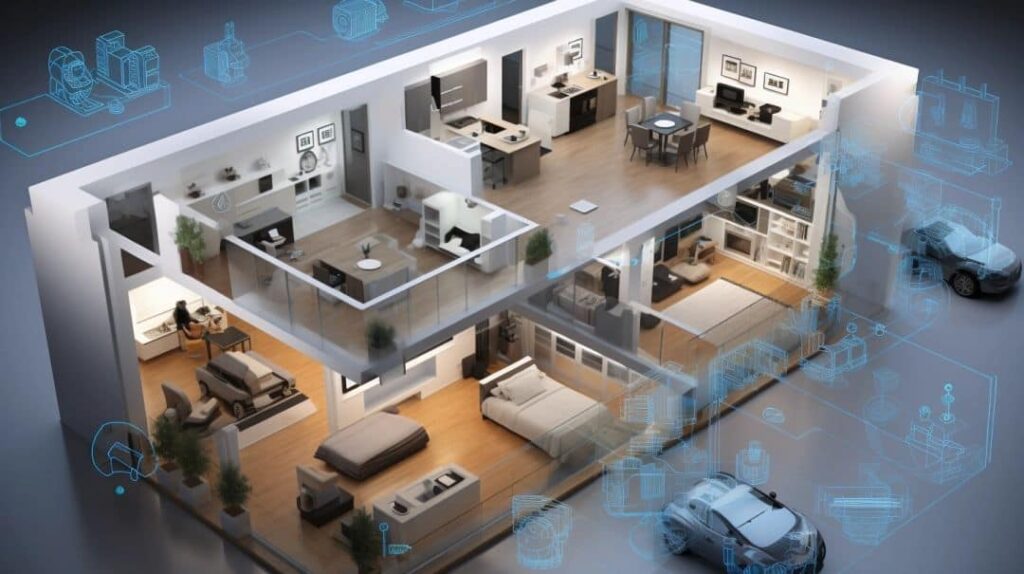
When setting up your home security system, best practices not only fortify your immediate safety but also safeguard your data privacy. Critical steps include judicious camera placement to avoid compromising personal areas, ensuring that your router and network settings are robust against intrusion attempts, and establishing a guest network to isolate traffic from main devices connected to the NVR or DVR systems you rely on.
These measures create multiple layers of defense, keeping both physical and digital threats at bay.
Proper camera placement
Placing your security cameras strategically is crucial for both monitoring your property effectively and protecting the data those cameras collect. Put cameras high enough to prevent tampering but within good viewing range of critical areas like entrances, exits, and windows.
Ensure they’re pointed away from direct sunlight to avoid glare that can obscure footage. Consider sight lines and obstructions when positioning them; you want clear views without intrusions blocking the camera’s eye.
Opt for locations where your cameras blend into their surroundings for discreet surveillance that doesn’t draw attention. Keep in mind WiFi camera placement should be within a strong signal range of your router to maintain a reliable connection essential for real-time updates and alerts.
Be mindful that wired security systems also require thoughtful setup—secure cables out of reach to deter potential vandals or hackers looking to disrupt your system’s integrity.
Your vigilance in proper camera placement enhances overall home security while ensuring the privacy that building owners value highly.
Securing the router and network
Make sure your router is the stronghold of your home security system. Change the default name and password to something unique that only you know. This will create a barrier against unauthorized access to your network, where sensitive data from DVRs or NVRs could be compromised.
Encrypting your wireless signals with WPA3 encryption is also essential; it’s currently the strongest level available for home networks.
Keep firmware on routers and connected devices up-to-date by regularly checking manufacturer websites or enabling automatic updates if available. This practice helps patch any known vulnerabilities that hackers could exploit.
Installing firewalls adds an extra layer of defense, controlling incoming and outgoing network traffic based on an applied rule set. Regularly review your firewall settings to ensure they meet current security standards—don’t leave this task until after trouble strikes!
Setting up a guest network
Once you’ve secured your router, it’s time to establish a guest network. This is a separate access point for visitors that ensures they can connect to the internet without gaining entry into the main network where your security system and personal data reside.
Creating a guest network adds an additional layer of protection; even if someone creates trouble while connected, your sensitive devices remain out of reach.
To set up this secure zone, log into your router settings and look for the ‘guest network’ option. Choose a distinct name (SSID) and a strong password that differs from your regular WiFi credentials.
Always keep this network hidden from public view by disabling ‘SSID broadcast.’ This will prevent it from appearing in WiFi lists, deterring potential hackers from targeting it. By implementing these steps diligently, building owners fortify their home security systems against unwanted online intruders.
Benefits of Security Camera Installation in Maintaining Home Security and Data Privacy
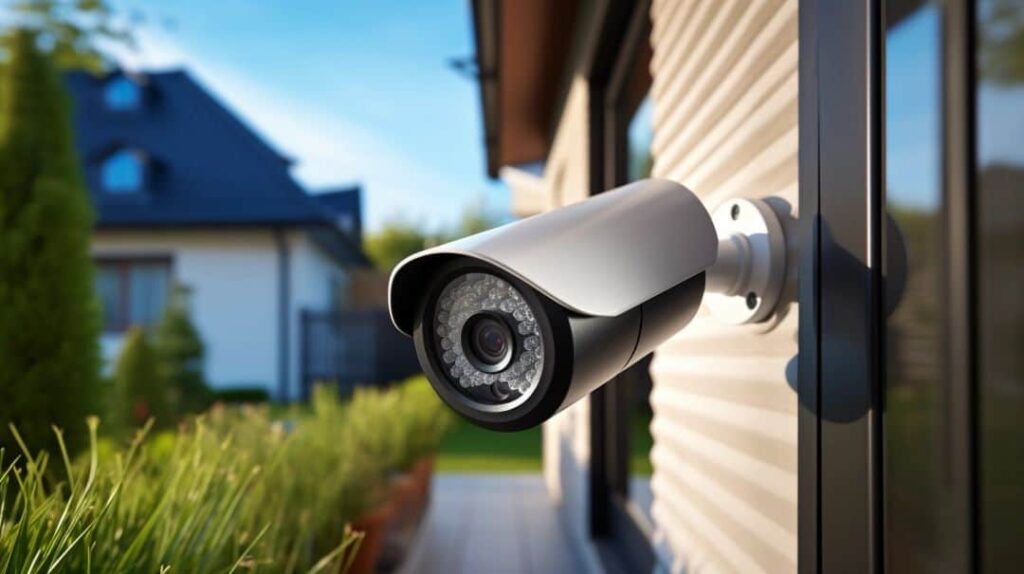
Installing security cameras at your property offers peace of mind and strengthens privacy protection. They serve as a deterrent to potential intruders while safeguarding sensitive data.
- Visible surveillance acts as a powerful deterrent, often preventing break-ins before they occur by signaling to would-be intruders that your home is well-protected.
- Modern security systems provide real-time monitoring capabilities, allowing you to oversee your property anytime from anywhere through a secure connection.
- Many cameras now include advanced encryption technology, ensuring that footage of your home remains private and accessible only to authorized users.
- Security cameras can be integrated with other smart home devices, creating a comprehensive system that not only protects against physical threats but also enhances digital security protocols.
- In the event of an incident, having high-quality video evidence can be critical for law enforcement investigations and may lead to quicker resolutions.
- Installing robust camera systems discourages trespassing and unauthorized entries, which means fewer chances for personal information theft or data breaches within the digital components of your security setup.
- Up-to-date DVR or NVR storage solutions offer secure ways to keep recorded footage on-site without relying on potentially vulnerable third-party cloud services.
Moving forward from keeping tight control over access points and visual supervision of your building, it’s crucial to consider how remote monitoring practices might impact overall privacy concerns.
Remote Monitoring and Privacy Concerns

When engaging in remote monitoring of your home security system, you’re accessing sensitive data that could become vulnerable if not properly secured. It’s essential to understand the potential risks, such as unauthorized access or interception of video feeds, and implement measures like robust password protocols and VPNs to ensure remote access is shielded from prying eyes.
Establishing secure connections for remote monitoring not only protects your privacy but also maintains the integrity of your home security framework.
Potential risks of remote monitoring
Remote monitoring allows you to check on your building anytime, from anywhere, but it’s not without its risks. Hackers targeting remote access can breach the system and gain control over cameras or other smart devices.
They might then spy on private areas or steal sensitive data stored in DVRs or NVRs. This unauthorized access could lead to compromised security of both your property and personal privacy.
You need a secure strategy for remote monitoring to avoid these pitfalls. Be cautious with sharing login credentials, and implement robust protection measures like two-factor authentication.
Always keep software up-to-date as outdated systems are easier targets for cyberattacks. Protecting against these threats helps maintain the integrity of home security systems and safeguards your data privacy from intruders online.
How to secure remote access
Understanding the risks of remote monitoring is crucial, but taking proactive steps to secure remote access can significantly reduce those threats. Adapt strong login credentials as a first line of defense; create complex passwords and change them frequently to keep potential intruders guessing.
Make use of two-factor authentication wherever possible for an added layer of security, ensuring that even if a password is compromised, your system remains protected.
Beyond basic logins, regularly update all software associated with your DVR or NVR systems. Manufacturers often release patches in response to discovered vulnerabilities, so staying current on updates keeps you one step ahead of hackers.
Control who has access by limiting permissions and monitor any unusual activity closely. By managing these aspects diligently, you establish a robust barrier against unauthorized access to your home security systems.
Maintaining Data Privacy

To maintain data privacy within your home security system, it’s crucial to perform regular maintenance on your devices. This includes updating firmware and software to patch vulnerabilities, removing any unnecessary data or features that could pose risks, and vigilantly monitoring network activity for any unusual behavior.
By staying proactive about these tasks, you minimize the chances of unauthorized access and ensure that your personal information remains secure.
Regularly cleaning and updating devices
Keep your security system running smoothly by regularly cleaning and updating your devices, including DVRs, NVRs, and cameras. Dust builds up on electronic equipment over time, which can lead to overheating or even failure.
Use a soft cloth to gently wipe surfaces without introducing moisture into any sensitive areas. Also, check for updates from the manufacturer that address newly discovered vulnerabilities or bugs.
Updating software is just as crucial for digital safety as physical cleaning is for device longevity. Manufacturers often release patches when they discover security holes that hackers could exploit.
Make sure you have the latest protection by keeping your system’s software current; this involves checking their website or contacting them through their support telephone number if you run into trouble-shooting issues during updates.
As you stay vigilant with maintenance tasks, also turn off any features on your devices that aren’t in use. This reduces potential entry points for cyber threats—leading directly into safeguarding against unauthorized access by disabling unused functions and monitoring network activity.
Disabling unused features
Cutting down on unnecessary features in your home security system can significantly bolster your data privacy. Often, security systems come with a range of extras that you might never use, yet they could be gateways for potential breaches.
Turn off these functions to streamline your setup and reduce the risk of unauthorized access. For instance, if you’re not using voice control capabilities or remote viewing through mobile apps, disable them to protect against hacking attempts.
Securing every aspect of your system extends beyond just choosing strong passwords or updating regularly; it means scrutinizing each feature and assessing its necessity. If an option isn’t critical to monitoring and protecting your property, shut it down.
This practice minimizes vulnerable spots within your system where hackers might attempt to infiltrate. Moving onto monitoring network activity should be your next step after ensuring all non-essential features are disabled.
Monitoring network activity
Monitoring network activity is a crucial step in securing your home security system and safeguarding your data. Regular checks on who accesses your system can help you spot any unusual activities or unauthorized logins before they become serious threats.
Watch the traffic that flows through your NVR, DVR, or cloud-based storage to ensure only recognized devices connect to your network.
Keep tabs on all devices linked to your security setup, including smartphones and tablets with remote viewing capabilities. Change passwords frequently and review logs of user access times to keep potential hackers at bay.
Monitoring helps detect vulnerabilities early, allowing you to address them promptly and maintain robust protection for the personal information captured by your home security cameras.
The Importance of User Education

Empowering each family member with knowledge about security measures transforms them into active participants in maintaining data privacy within your home. Teach children and adults alike the essentials of safe online practices to fortify your home against digital intrusions effectively.
Educating family members about security measures
Educating your family on home security measures is key to maintaining both safety and data privacy. Start by holding a meeting to go over the basics of operating the security system, emphasizing the importance of strong passwords and keeping them confidential.
Make sure everyone understands how to properly arm and disarm alarms, access cameras safely, and recognize signs of tampering or hacking attempts.
Teach your family members about two-factor authentication as an added layer of protection for devices like DVRs or NVRs. Discuss why it’s crucial not to click on suspicious links or give out information regarding your home network during online interactions.
Engage younger kids with simple explanations about internet safety and set clear rules for what they can share online. Regularly update everyone at home when new software updates are available for your security systems, ensuring that you collectively keep hackers at bay by having the latest defenses in place.
Teaching kids about safe online practices
Teach your children the basics of online safety early on to help them avoid potential dangers. Explain why sharing passwords or personal information is risky, even when it seems harmless or they’re among friends.
Make sure they understand how to recognize suspicious behavior and encourage them not to interact with strangers online. Installing security cameras from reputable providers like Best Buy can also give you peace of mind as you monitor what’s happening at home while educating your kids about safe practices.
Create a family routine that includes checking privacy settings and software updates together. This will ensure that digital video recorders (DVRs) and network video recorders (NVRs) remain secure against cyber threats.
Encourage your kids to come to you if anything online makes them uncomfortable, reinforcing the importance of open communication for maintaining both home security and their own digital well-being.
Legal Protections for Data Privacy
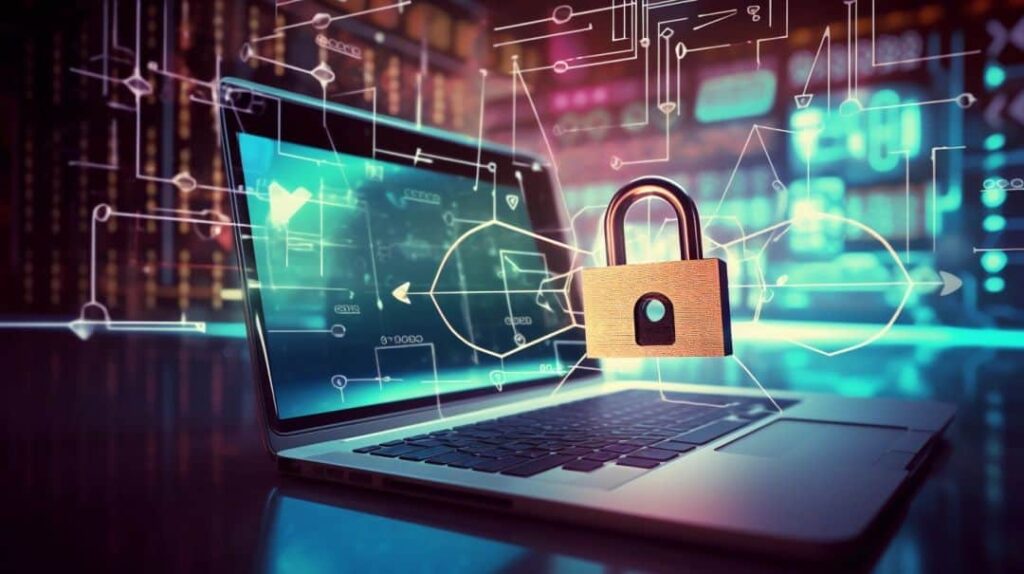
Understanding the legal landscape surrounding data privacy is paramount for building owners employing home security systems. Familiarize yourself with regulations like the GDPR in Europe or the CCPA in California, which grant individuals greater control over their personal information and mandate certain protections by companies collecting data.
Knowing your obligations under these laws not only ensures compliance but also builds trust with tenants who are increasingly conscious of their digital footprint. Remember, staying informed about privacy legislation can help you avoid costly penalties and reinforce your commitment to safeguarding residents’ personal details.
Understanding privacy laws
Navigating the realm of privacy laws can be like walking through a maze. Different states, and sometimes even cities, have their own sets of regulations governing how personal data should be handled by home security systems.
As a building owner, you must keep abreast with these laws to make sure your property’s security system complies. This includes knowing what kind of footage can be legally recorded and stored on devices like DVRs or NVRs.
Privacy protections for consumers are becoming stronger with each passing year. The Electronic Frontier Foundation (EFF) advocates for stringent rules that secure digital rights, ensuring that individuals maintain control over their personal information.
Moreover, suppliers also need to abide by consumer rights standards when designing products that collect data—your choice in security cameras should reflect this priority towards data protection.
By paying attention to these legal requirements and opting for models tested for robust privacy policies by organizations such as Consumer Reports, you’ll not only safeguard occupants but also align with best practices recommended by experts in the field.
Consumer rights
Understanding your rights as a consumer is critical when it comes to home security systems. Privacy laws are in place to protect you from unauthorized access to your personal information.
Your home security system might be equipped with a DVR or NVR, both of which store sensitive data that could be vulnerable if not properly protected. The Electronic Frontier Foundation (EFF) advocates for these rights, ensuring that consumers maintain control over their digital privacy.
Reputable providers should inform you about the measures they take to safeguard your data and how they respond to privacy breaches—if they occur. Consumer Reports can also serve as a valuable resource, offering insights into wireless security cameras’ privacy and security features during checkout.
It’s essential for you to know what protections exist and how they apply to the equipment used in securing your building. Next up: we’ll explore legal protections more closely and what they mean for maintaining data privacy within your home security setup.
Conclusion
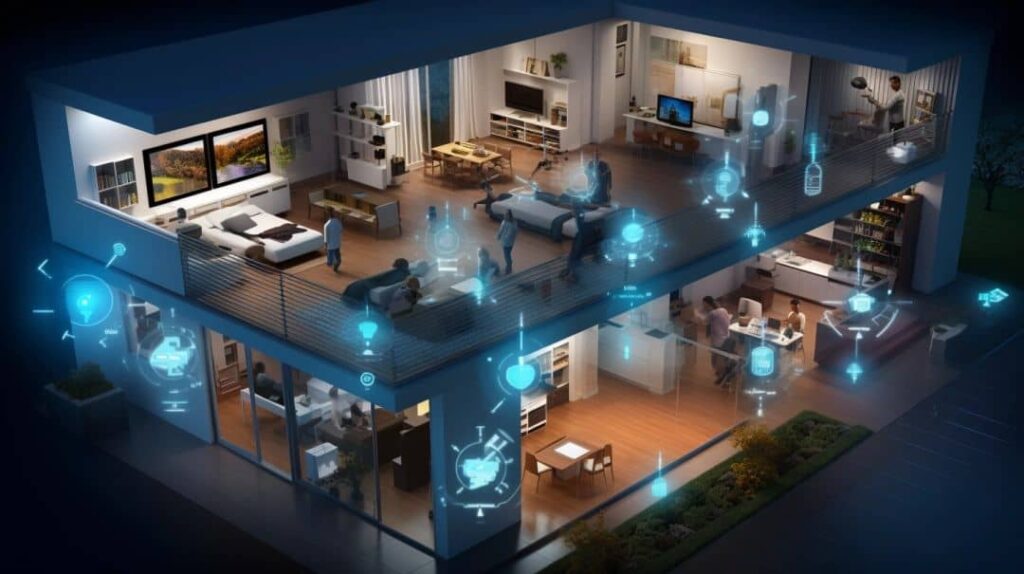
Protecting your privacy while keeping your home secure is more than just a priority—it’s a necessity in today’s digital era. The steps we’ve discussed, from selecting reputable providers to employing robust encryption, are straightforward yet effective.
Can you see how simple measures like updating passwords and securing networks make a huge difference? Remember, the safety of your data dictates the strength of your security system’s effectiveness against threats.
Take action now, implement these best practices, and rest assured that you’re safeguarding both your home and your personal information with confidence.
Contact Jefferson Security Systems today to schedule a consultation with our home security experts. We provide customized solutions featuring robust encryption and advanced data privacy protections to keep your home and family safe in the digital age. Call (267) 656-7225 or contact us to get started securing your peace of mind.
FAQs
What steps can I take to securely monitor my home security system remotely?
To securely monitor your home security system remotely, use strong login credentials and change passwords frequently, enable two-factor authentication, regularly update software, limit remote access permissions to authorized users only, use a VPN connection, and watch closely for any suspicious activity in the system logs.
How can I prevent hackers from accessing the data from my home security cameras?
You can prevent hackers from accessing your home security data by using strong passwords, updating software regularly, enabling two-factor authentication, encrypting data, securing your WiFi network, limiting remote access permissions, and monitoring activity for anything unusual.
What are some examples of personal information that could be at risk from a home security breach?
If home security systems are not properly secured, hackers could potentially access video feeds from cameras showing private moments, files stored on DVRs or NVRs containing financial information or other sensitive data, phone numbers, daily routines based on footage, and more.
Should I be concerned about legal regulations related to home security systems?
Yes, you should understand relevant privacy laws like GDPR and CCPA which give individuals more control over their personal data collected by home security systems. Following regulations builds trust and avoids penalties.
How can I involve my family in protecting our home security data?
Educate all family members on topics like strong passwords, two-factor authentication, recognizing hacking attempts, avoiding suspicious links, updating software regularly, and basic online safety. Make security a shared responsibility.
